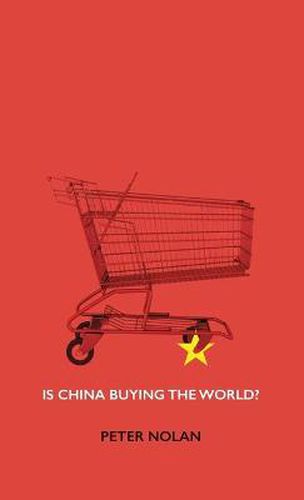Readings Newsletter
Become a Readings Member to make your shopping experience even easier.
Sign in or sign up for free!
You’re not far away from qualifying for FREE standard shipping within Australia
You’ve qualified for FREE standard shipping within Australia
The cart is loading…






China has become the world’s second biggest economy and its largest exporter. It possesses the world’s largest foreign exchange reserves and has 29 companies in the FT 500 list of the world’s largest companies. ‘China’s Rise’ preoccupies the global media, which regularly carry articles suggesting that it is using its financial resources to ‘buy the world’. Is there any truth to this idea? Or is this just scaremongering by Western commentators who have little interest in a balanced presentation of China’s role in the global political economy?
In this short book Peter Nolan - one of the leading international experts on China and the global economy - probes behind the media rhetoric and shows that the idea that China is buying the world is a myth. Since the 1970s the global business revolution has resulted in an unprecedented degree of industrial concentration. Giant firms from high income countries with leading technologies and brands have greatly increased their investments in developing countries, with China at the forefront. Multinational companies account for over two-thirds of China’s high technology output and over ninety percent of its high technology exports. Global firms are deep inside the Chinese business system and are pressing China hard to be permitted to increase their presence without restraints.
By contrast, Chinese firms have a negligible presence in the high-income countries - in other words, we are ‘inside them’ but they are not yet ‘inside us’. China’s 70-odd ‘national champion’ firms are protected by the government through state ownership and other support measures. They are in industries such as banking, metals, mining, oil, power, construction, transport, and telecommunications, which tend to make use of high technology products rather than produce these products themselves. Their growth has been based on the rapidly growing home market. China has been unsuccessful so far in its efforts to nurture a group of globally competitive firms with leading global technologies and brands. Whether it will be successful in the future is an open question.
This balanced analysis replaces rhetoric with evidence and argument. It provides a much-needed perspective on current debates about China’s growing power and it will contribute to a constructive dialogue between China and the West.
$9.00 standard shipping within Australia
FREE standard shipping within Australia for orders over $100.00
Express & International shipping calculated at checkout
China has become the world’s second biggest economy and its largest exporter. It possesses the world’s largest foreign exchange reserves and has 29 companies in the FT 500 list of the world’s largest companies. ‘China’s Rise’ preoccupies the global media, which regularly carry articles suggesting that it is using its financial resources to ‘buy the world’. Is there any truth to this idea? Or is this just scaremongering by Western commentators who have little interest in a balanced presentation of China’s role in the global political economy?
In this short book Peter Nolan - one of the leading international experts on China and the global economy - probes behind the media rhetoric and shows that the idea that China is buying the world is a myth. Since the 1970s the global business revolution has resulted in an unprecedented degree of industrial concentration. Giant firms from high income countries with leading technologies and brands have greatly increased their investments in developing countries, with China at the forefront. Multinational companies account for over two-thirds of China’s high technology output and over ninety percent of its high technology exports. Global firms are deep inside the Chinese business system and are pressing China hard to be permitted to increase their presence without restraints.
By contrast, Chinese firms have a negligible presence in the high-income countries - in other words, we are ‘inside them’ but they are not yet ‘inside us’. China’s 70-odd ‘national champion’ firms are protected by the government through state ownership and other support measures. They are in industries such as banking, metals, mining, oil, power, construction, transport, and telecommunications, which tend to make use of high technology products rather than produce these products themselves. Their growth has been based on the rapidly growing home market. China has been unsuccessful so far in its efforts to nurture a group of globally competitive firms with leading global technologies and brands. Whether it will be successful in the future is an open question.
This balanced analysis replaces rhetoric with evidence and argument. It provides a much-needed perspective on current debates about China’s growing power and it will contribute to a constructive dialogue between China and the West.